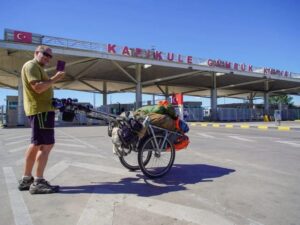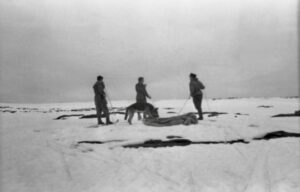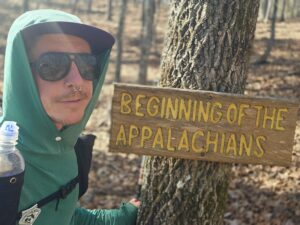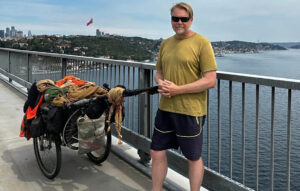More than 4,500 fastest known time (FKT) records fell in 2020, as competitive runners turned to solo projects.
Since March 2020, marathons and other long-distance group races have canceled because of COVID-19. Rather than waste the year, runners around the globe changed their focus: They raced against the clock instead of their peers.
The Financial Times reports that the website fastestknowntime.com logged more than 4,500 FKT records in 2020, a 350% increase over 2019. Trail Runner magazine revealed that in July 2019, there were 151 verified FKTs. In July 2020, there were 566.

FKTs 1985-2020. Photo: fastestknowntime.com
The pursuit of FKTs has become steadily more popular for ultra athletes, but the past year has seen a boom like never before. Every month, athletes submit more than a hundred claims. At least half of these are verified.
Fastestknowntime.com, which validates the attempts, lays out just a few rules:
- The route is notable and distinct enough so that others will be interested in repeating it.
- Routes should be over eight kilometres or have at least 150m of climbing.
- At least 50% of the time must be running/hiking vs. other self-propelled travel. Once a route is established as a run or hike, cycling cannot be employed for any distance.
- Routes may be on any surface –- road, trail, or off-trail.
- You have to state your intention in advance and provide real-time tracking and photographic evidence.
Co-founder of the FKT database and FKT legend Buzz Burrell notes that “Anyone can do this. There are routes all over the world. Find one that has meaning to you and go for it.”
Despite this gung-ho attitude, even Burrell and his colleagues were shocked at the spike in world-beating times. They had expected to see this type of growth over the next five years, not within a few months. “There has been a huge uptick in the amount of work for us,” he says.

Damian Hall after his Penine Way run. Photo: Dave McFarlane
“If you can’t be fast, be first”
The year has not only seen a rise in FKT records and attempts but an increase in new routes. The most important aspect of a new route is that it has to be interesting. “Every route is not an FKT route. You have to read it and go, ‘Wow, I want to do that,’” says Burrell.
One notable addition, for example, has been a variation of the well-known loop through Central Park in New York. Rather than the fastest single loop — an old, well-established record — runner Aaron Zellhoefer proposed a record based on the number of loops you could do during the park’s opening hours (6 am to 1 am). Zellhoefer completed 11 laps of the 6.1-mile loop.
“That’s one that a lot of people could contest,” said Fastestknowntime co-founder Peter Bawkin. He also noted that new routes allow non-elite runners to earn a spot on the website, however briefly. “Often they’ll submit a route and say, ‘My time can easily be beaten,’” says Bawkin. “But if you can’t be fast, be first.”

Beth Pascall set a new women’s record on the Bob Graham Round. Photo: Sam Benard
Spanish long-distance runner Kilian Jornet, who has 14 FKTs to his name, spoke about the new trend. “People have been trying to beat times like this ever since Frédérik Morshead climbed Mont Blanc way back in 1864 and John Muir climbed Mt Shasta in 1874….FKTs existed before any race.”
He believes that FKT attempts are good for the sport because they encourage people to run. He spent 2020 trying to set FKTs in the mountains near his home and to come up with more ideas. Last October, injury forced him to abandon a 24-hour track record attempt.
Similarly, U.S ultrarunner Kyle Curtin notes, “With an FKT attempt, you can control every factor, you can wait for a good weather day.” Last July, Curtin set the unsupported FKT for the Tahoe Rim Trail. He completed it in 41 hours and 9 minutes, still a few hours off the supported record that Kilian Jornet set in 2009.
Dozens of records on iconic routes
Within the last year, barely known records, untouched for years, have been broken and rebroken within days of each other. Dozens of more records have fallen on iconic routes around the world. Last July, two of the world’s most prolific ultrarunners went head to head over one of the oldest records in British running: The time for the 431km Pennine Way, the UK’s oldest national trail. American ultrarunner John Kelly broke the record by finishing in two days, 16 hours, and 46 minutes. One week later, Damian Hall of the UK broke Kelly’s record by three hours.
Sabrina Verjee, whom Damien Hall calls The First Lady, also hit the Pennine Way in 2020. In September, she broke the women’s record by finishing in three days, two hours, and 28 minutes.
Just weeks earlier, the 39-year old Briton also became the first woman to complete a nonstop 525km round of the 214 summits in the Lake District, the so-called Wainwrights Round. It took her six days, 17 hours, and 15 minutes. It has only been completed four times. However, she received some support because of a knee injury, so “I don’t consider my Wainwrights round a record,” she says.

Sabrina Verjee tackles the Pennine Way. Photo: Claire Maxted
In the Bob Graham Round, athletes climb all 42 peaks in the UK’s Lake District in one go. The 100km circuit is a rite of passage for many runners, and over the last year, both men and women have set new records. Shane Ohly broke the 34-year winter record in December, becoming at the same time only the second person to ever complete a solo, unsupported winter attempt. His time: 23 hours and 26 minutes. Beth Pascall did the same route in a record time of 14 hours and 34 minutes last July. She was just 1 hour and 42 minutes behind Kilian Jornet’s 2018 record.
As canceled events stretch into 2021, FKTs continue to fill the gap. “If there’s a route out there, someone is going to try and do it as fast as they can,” said YiOu Wang, who set the unsupported team FKT for the Rae Lakes Loop in the U.S. last July.






